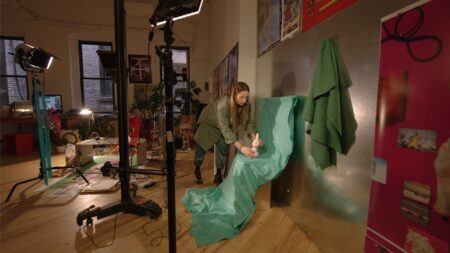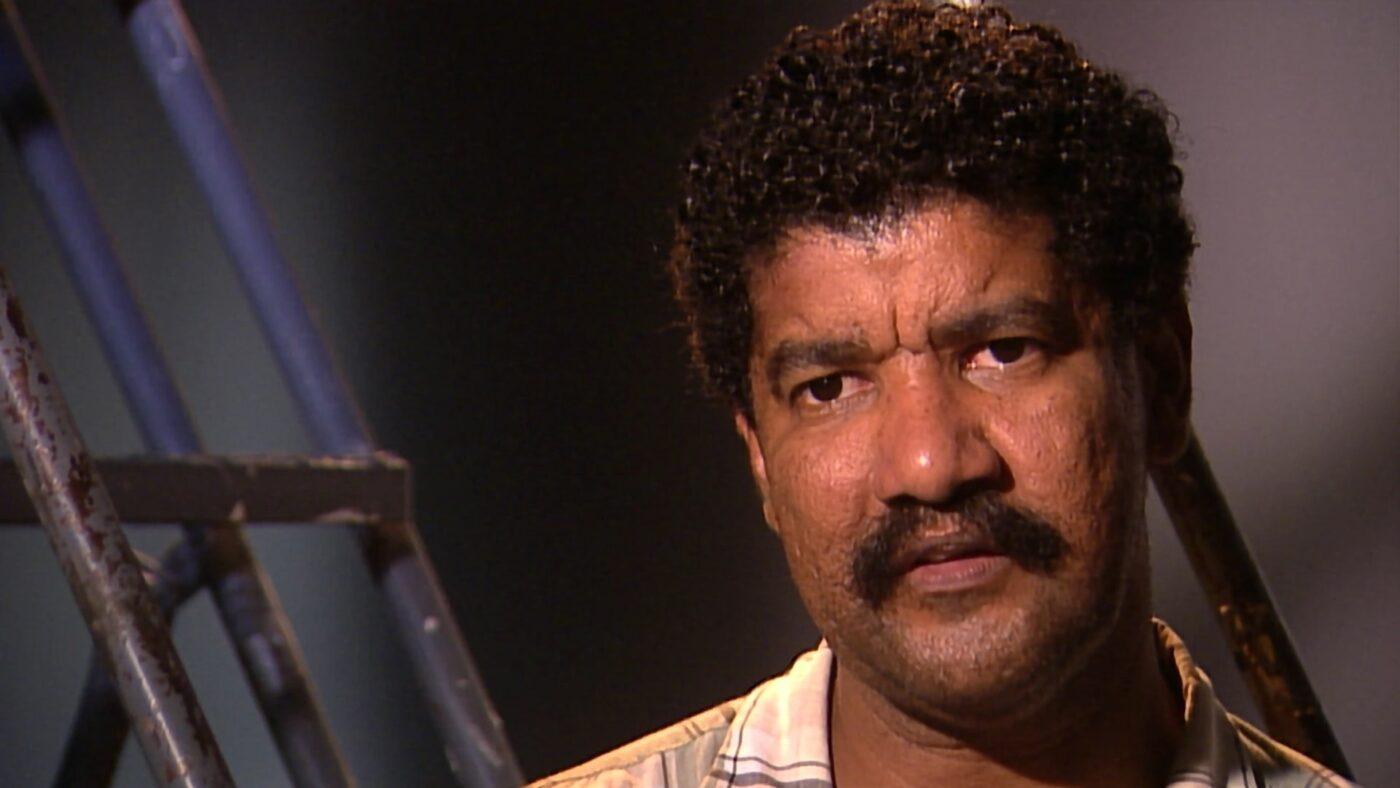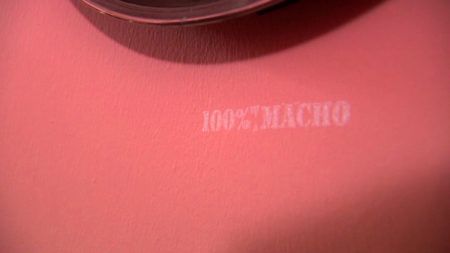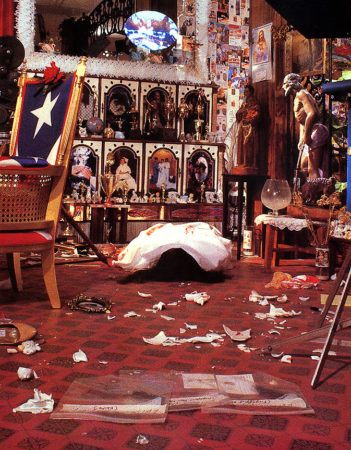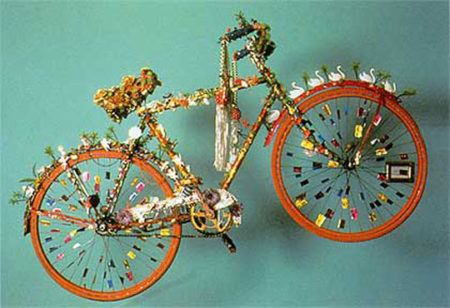Pepón Osorio

Pepón Osorio was born in 1955 in Santurce, Puerto Rico, and currently lives and works in Philadelphia, Pennsylvania. In 1975, Osorio left Puerto Rico and moved to the South Bronx in New York City, where he received a degree in sociology from Lehmann College and began working as a social worker in the Human Resources Administration. He later received an MA in sociology from Columbia University in 1985. Influenced by his experiences as a social worker in The Bronx, Osorio builds a participatory model of art that reflects the lives and stories of his communuities. Through his installations and sculptures, the artist calls attention to issues of race, violence, and gender prevalent in the Latinx community.
In his work, Osorio engages Latinx and Afro-Latinx communities in the conception of new projects and bases the success of his work on its impact on his communities. En la barbería no se llora (No Crying Allowed in the Barbershop) (1994) is a mixed-media installation inspired by the artist’s first haircut. Osorio constructs a barbershop laden with symbols of masculinity from car seats, sports paraphernalia, trophies, action figures, and videos of men in conventionally masculine poses to comment on machismo in Latinx communities and its heightened role in male-dominated spaces such as barbershops. In “Scene of the Crime (Whose Crime?)” (2003), the artist depicts a maximally decorated living room that has become a crime scene, a figure covered in a bloody white tarp lies on the floor surrounded by religious iconography, Puerto Rican flags, and ornate furnishings. Yellow police tape separates the installation from the viewer, considering the complicity of the spectator in this scene of violence, as the work draws upon the stereotypical depictions of Latinx homes and cultures found in popular film and television. Osorio asks himself, “How do Latinos see themselves? How do I see them? How are we seen by others?”
Alongside his installation work, Osorio creates sculptures that further express his intent in centering community care and engaging local audiences materially and conceptually. “My principal commitment as an artist is to return art to the community,” he says. His series Home Visits (1999-2000) consists of small movable sculptures that move from house to house, inviting different families to live with the works for a week. In one of the moveable sculptures, Tina’s House (2000), the artist constructs a dollhouse that narrates the story of Philadelphia resident Tina Rosado and her two daughters, who lost everything in a house fire. By inviting different families to live with the work, the artist recalls the Puerto Rican tradition of the visiting saint, where religious iconography is borrowed from the church for a short period of time. In doing so, he elevates the role of his community and its people, spreading awareness about Latinx and Afro-latinx stories, and creating a communal space for support and care.
Videos 2
Read
Galleries
It’s hard to explain what I’m trying to do as an artist, because I don’t fit the artist description.
Pepón Osorio
